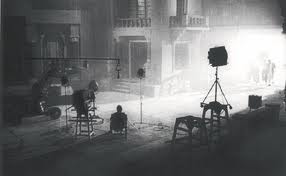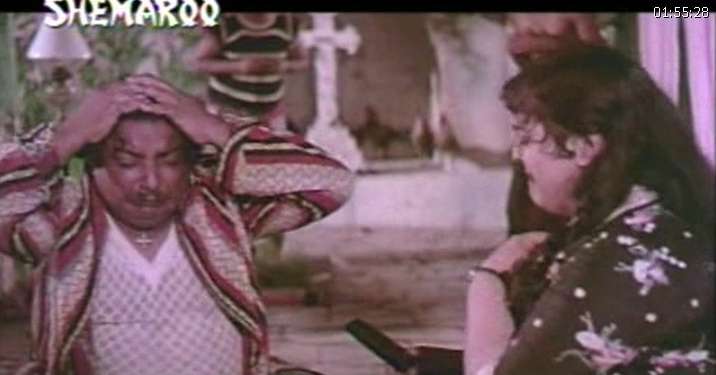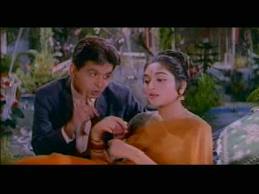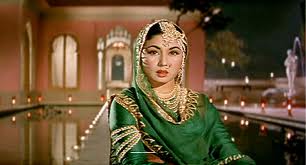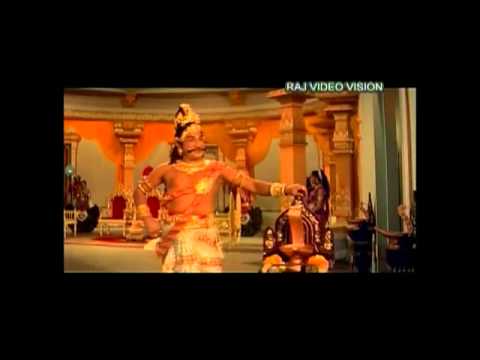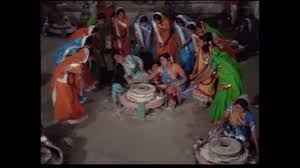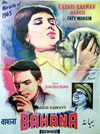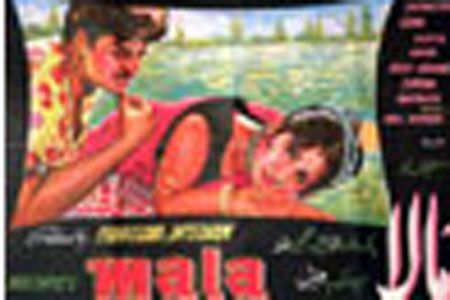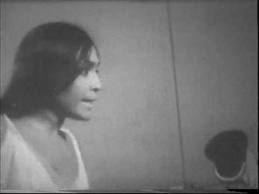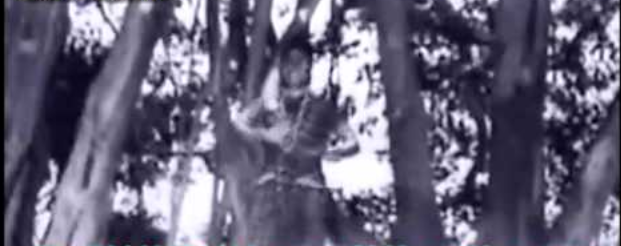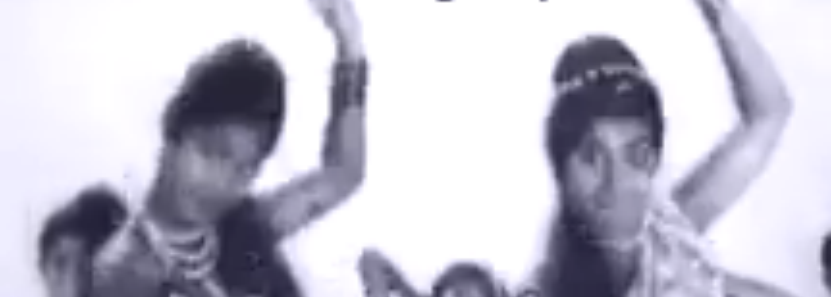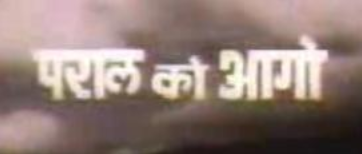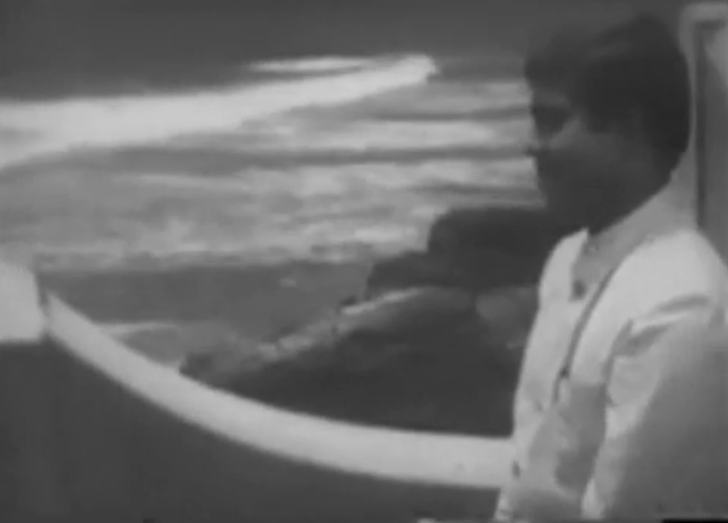CinemaScope films in Bangladesh, India, Nepal, Pakistan, Sri Lanka
(→70mm) |
|||
| (216 intermediate revisions by 7 users not shown) | |||
| Line 1: | Line 1: | ||
| + | [[File: pardesi2.jpg| [[Pardesi (1957)]]: Nargis (left) and Oleg (third from left)|frame|500px]] | ||
| + | |||
| + | {| class="wikitable" | ||
| + | |- | ||
| + | |colspan="0"|<div style="font-size:100%"> | ||
| + | |||
| + | You can '''update or correct this page, ''' send photographs and/ or <br/> | ||
| + | contribute completely new articles on any North East-related <br/> subject to the Facebook page, [http://www.facebook.com/Indpaedia Indpaedia.com]. All information <br/> used will be duly acknowledged. <br/> | ||
| + | |||
| + | </div> | ||
| + | |} | ||
| + | |||
| + | =Part 1: CinemaScope films in Bangladesh, India, Nepal, Pakistan, Sri Lanka= | ||
| + | By P. Dewan | ||
== CinemaScope films in India == | == CinemaScope films in India == | ||
| + | [[File: pardesi3.jpg| [[Pardesi (1957)]]:Padmini in India's first widescreen (SovScope) film; it was in colour as well.|frame|500px]] | ||
| + | |||
| + | [[File:kkp.jpg|India's second CinemaScope film, Kaagaz ke Phool, has acquired a cult status because of sequences like this. |frame|left|500px]] | ||
| + | [[File:kkp2.jpg|Kaagaz ke Phool was not a low-budget arthouse film (though it is sometimes seen as one). It was, instead, a stately, lavishly produced film, as sophisticated as the best French, Italian and Swedish films of the era. It preceded by a few years B&W—CinemaScope classics like Federico Fellini’s La Dolce Vita (1960/ Italy) and Alain Resnais’ Last Year at Marienbad (1961/ France). B&W=black and white. |frame|500px]] | ||
| + | [[File: Pyar-Ki-Pyas-1961.jpg|Pyar Ki Pyas (1961) was India's third film in CinemaScope and the second that was in colour as well.| frame|100px]] | ||
| + | [[File: Son of India.jpg| Son of India: Nanha munha rahi hoon|frame|left|500px]] | ||
| + | [[File: leader.jpg | Leader|frame|500px]] | ||
| + | [[File: pkz.jpg | In ka naam Pakeezah hai (1972/ Eastmancolor): Meena Kumari|frame|500px]] | ||
| + | [[File:Alluri_Seetharamaraju.jpg|Alluri Seetharamaraju |frame|left|500px]] | ||
| + | [[File:raja raja cholan.jpg|Raja Raja Cholan| frame|500px]] | ||
| + | [[File: Sonbai ni Chundadi.jpg| Sonbai ni Chundadi |left|frame|500px]] | ||
| + | [[File:Bahana.jpg|frame|500px]] | ||
| + | [[File:mala.jpg|frame|left|500px]] | ||
| + | [[File: WELIKATHARA.jpg| Welikathara |frame|500px]] | ||
| + | |||
| − | [[File: | + | [[File: scope.jpg| A frame from The Robe. Above: As the frame looks naturally. Below: The same image projected through an anamorphic lens. [http://peplums.blogspot.in/2012/12/cinemascope-frame.html peplums]|frame|500px]] |
| − | [[File: | + | [[File: scope2.jpg| Above: An image projected through an anamorphic lens, i.e. a CinemaScope image. Below: What the film containing the same image would look like when held before the naked eye. [http://commons.wikimedia.org/wiki/File:Anamorphose_cinemascope_desert_meme_sens.jpeg commons] |frame|500px]] |
===Roots in the USA and the USSR=== | ===Roots in the USA and the USSR=== | ||
‘The Robe’ (USA, 1953/ 20th Century-Fox/ Colour) was the world’s first motion picture to be filmed in wide-screen 35mm, CinemaScope. The original trailer had Darryl F. Zanuck, Vice President, Production, 20th Century-Fox, explaining what CinemaScope was and how it worked. | ‘The Robe’ (USA, 1953/ 20th Century-Fox/ Colour) was the world’s first motion picture to be filmed in wide-screen 35mm, CinemaScope. The original trailer had Darryl F. Zanuck, Vice President, Production, 20th Century-Fox, explaining what CinemaScope was and how it worked. | ||
| − | In 1956, Aleksandr Ptushko (born in Lugansk, Ukraine) released Il'ia Muromets, the first Soviet film shot in stereo and for the wide-screen ( | + | In 1956, Aleksandr Ptushko (born in Lugansk, Ukraine) released Il'ia Muromets, the first Soviet film shot in stereo and for the wide-screen (SovScope). |
Indian cinema got off to a very early start with this new technology, thanks to a collaboration with the USSR's Mosfilm Studios. | Indian cinema got off to a very early start with this new technology, thanks to a collaboration with the USSR's Mosfilm Studios. | ||
| − | |||
| − | |||
=== The 1950s === | === The 1950s === | ||
| + | ====Pardesi==== | ||
| + | The bilingual Indo-Soviet film [[Pardesi (1957)]] (Hindi-Urdu/ Russian/ dirs: Khwaja Ahmad Abbas, Vasili M. Pronim) was released in 1957. The film is called ‘Khozhdenie za tri morya’ (Хождение за три моря) in Russian and its subtitled English version is known as ‘Journey Beyond Three Seas.’ India’s first wide-screen film was in SovColor. (CinemaScope is a brand name. SovScope has the same aspect ratio and uses similar technology.) | ||
| + | Can [[Pardesi (1957)]] be considered an Indian film? True, it was a co-production but it was released in India first. Its Indian Censor Certificate states ‘Colour, Scope’ and gives the name of its filmmakers as ‘Meera Movies’ and ‘Son[?]a Sansar International.’ | ||
| − | + | Even in the Russian version Naya Sansar's name appears before Mosfilm's. | |
| + | ====Guru Dutt==== | ||
| + | In 1957 actor-director Guru Dutt purchased from 20th Century Fox the technology needed to make a CinemaScope film—Gouri, a Bengali film with him in the lead opposite his real-life wife, the singer-actress Geeta Dutt. According to a cinema historian, “By 1957, [their] marriage had run into rough weather and was on the rocks. Guru Dutt had fallen for his new leading lady Waheeda Rehman. The breaking up of [their] marriage also began having repercussions on [Geeta Dutt’s] career. To quieten things down Guru Dutt launched a film Gauri (1957).”[http://www.youtube.com/watch?v=jtUffojNuEk] | ||
| − | + | Some of the film was shot in and around Calcutta and two songs were recorded. However, Guru Dutt decided to stop making Gouri, presumably because of the domestic situation. He launched Kaagaz ke Phool instead, with Waheeda Rehman. | |
| − | + | ‘Kaagaz Ke Phool’ (Hindi-Urdu, 1959) was India’s second CinemaScope film and was filmed in black and white (B&W), in technical collaboration with 20th Century Fox. It had an aspect ratio of 2.35: 1. This film was widely released, got excellent reviews from the minuscule literati--and scathing ones from vastly more influential bimbos like Babubhai Patel. Its soundtrack album was a success (and, like the film itself, a cult favourite to this day). However, ‘Kaagaz Ke Phool’ flopped at the box office, because the subject was considered too heady (and, to quote Dutt's friend Dev Anand, depressing) for the 1950s. | |
| − | + | ||
| − | ‘Kaagaz Ke Phool’ (Hindi-Urdu, 1959) was India’s second CinemaScope film and was filmed in black and white, in technical collaboration with 20th Century Fox. It had an aspect ratio of 2.35: 1. This film was widely released, got excellent reviews from the minuscule literati--and scathing ones from vastly more influential bimbos like Babubhai Patel. Its soundtrack album was a success (and, like the film itself, a cult favourite to this day). However, ‘Kaagaz Ke Phool’ flopped at the box office, because the subject was considered too heady (and, to quote Dutt's friend Dev Anand, depressing) for the 1950s. | + | |
CinemaScope,thus, had a very shaky start in India. | CinemaScope,thus, had a very shaky start in India. | ||
| + | ===Cine historian Sudhir on how the technology was distributed within India=== | ||
| + | CinemaScope was and still is an inexpensive technology | ||
| − | + | ''' To Shoot the Film:''' One needs an 'Attachment' for the camera, which | |
| − | + | compresses the view from 2.35 : 1 aspect to 1.35 : 1 for 35 mm frame. | |
| + | 2oth Century Fox loaned out this attachment for a small rental fee | ||
| − | + | ''' The Cinema Hall operators ''' needed two items: i) An 'Attachment for | |
| + | the Projector', which expanded the compressed image back to an ‘aspect ratio’ of 2.35 : 1. The film producer bought this item from 20th Century and | ||
| + | with each print released included this Lens Attachment. The distributor | ||
| + | in turn, sent this Attachment to the Cinema Hall. | ||
| − | + | 2 - The Cinema Hall owner had to modify the screen, which was done by | |
| + | increasing the width of the screen and then adding Flaps on each side. For | ||
| + | projecting a CinemaScope film, these flaps were opened with a hook-type fixture affixed to the wall. | ||
| − | + | 20th Century was quite liberal in terms of licensing. The studios (i.e. | |
| + | film producer/s could add any name to this technology, as long as it ended | ||
| + | in Scope. SovScope, FilmalyaScope, MetroScope are all same items | ||
| − | + | The Aspect Ratio need not have to be 2.35 : 1. Many films have been made | |
| + | with an 1.85: 1 aspect ratio | ||
| − | === | + | For many years from the start of this technology, only a few prints would be made |
| − | + | in the Wide Screen format. A large number of these CinemaScope films were | |
| − | + | released in the ‘un-compressed’ Format (i.e.: the regular 4:3 Aspect). This | |
| + | type of dual standard was used for SHOLAY (1975). | ||
| + | ====Mr Sudhir on Pardesi==== | ||
| + | Mr Sudhir seems to recall that '' Pardesi '' (1957) was released in India in the Non-CinemaScope format-though in colour. Indpaedia, however, has in its possession a DVD with a B&W/ CinemaScope print in Hindi-Urdu. YouTube has the film's Hindi-Urdu songs in Colour and CinemaScope. Therefore, the film was released in India in multiple formats. | ||
| − | + | Mr Sudhir adds: The Russian version is available on YouTube. It is in Color + CinemaScope | |
| − | + | (2.35 : 1 aspect). However, the [amateur] at MOSFilm, who was given the | |
| − | + | job of converting the 'Source Files' to Mp4 format for YouTube | |
| − | + | stretched the video by 33% (the video file size is640 x 208= 3.07 : 1 pixel) | |
| − | + | The URL for the 2 parts are: | |
| − | + | [http://www.youtube.com/watch?v=R5IYtpdhL9o (Part 1)] | |
| + | and | ||
| + | [http://www.youtube.com/watch?v=PvLHxkgNkDg (Part 2)] | ||
| − | + | It has more or less all the songs. However, except for 'Na Ja | |
| + | Na Ja Balam / Lata' all other were mutilated by the director. | ||
| − | + | For this song, one can view the perfect file (2.35 ratio + Color) | |
| + | at URL | ||
| + | [http://www.youtube.com/watch?v=Q81h3pC5Rg0 Pardesi: the correct print] | ||
| − | + | [[Category:Bangladesh|C | |
| + | CINEMASCOPE FILMS IN BANGLADESH, INDIA, NEPAL, PAKISTAN, SRI LANKA]] | ||
| + | [[Category:Cinema-TV-Pop|C | ||
| + | CINEMASCOPE FILMS IN BANGLADESH, INDIA, NEPAL, PAKISTAN, SRI LANKA]] | ||
| + | [[Category:India|C | ||
| + | CINEMASCOPE FILMS IN BANGLADESH, INDIA, NEPAL, PAKISTAN, SRI LANKA]] | ||
| + | [[Category:Nepal|C | ||
| + | CINEMASCOPE FILMS IN BANGLADESH, INDIA, NEPAL, PAKISTAN, SRI LANKA]] | ||
| + | [[Category:Pakistan|C | ||
| + | CINEMASCOPE FILMS IN BANGLADESH, INDIA, NEPAL, PAKISTAN, SRI LANKA]] | ||
| + | [[Category:Sri Lanka|C | ||
| + | CINEMASCOPE FILMS IN BANGLADESH, INDIA, NEPAL, PAKISTAN, SRI LANKA]] | ||
| − | + | ====Mr Sudhir on the first 5 Indian CinemaScope films==== | |
| + | Mr Sudhir adds: Unfortunetly, all 5 initial films made in CinemaScope failed. His views on these 5 films are: | ||
| − | + | Except for KAAGAZ KE PHOOL, for the rest sincere efforts were made | |
| − | + | to present idiotic films. | |
| − | + | ||
| − | + | ||
| − | + | PARDESI - Except for 1 film (ANHONEE featuring: Main Dil Hoon Ik Arman Bhara), all of K A Abbas films have been flops | |
| − | + | PYAR KI PYAS - Mahesh Bhat generally made un-interesting and dated films | |
| − | + | SON OF INDIA – Mr Sudhir calls it a ‘Gujrati Thaali. Idiotic story and twists’ | |
| − | + | LEADER- Mr Sudhir writes, ‘Produced by S Mukherji with funds from moneyed | |
| + | people, who wanted some vehicle for tax deduction | ||
| + | Hence, instead of getting it directed by any of | ||
| + | dozen of directors, SK could ask for, the job was | ||
| + | was given to RAM Mukherji, who was a green-horn | ||
| + | Like SON OF INDIA, it too has [Quixotic] | ||
| + | characters. | ||
| − | + | === The 1960s === | |
| − | |||
| − | + | Initially, CinemaScope was an expensive technology--not so much for the film's makers (who only needed to hire a fancier camera) as for the cinema halls, each of which had to get new projection lenses and, more important, invest in new widescreens. Only such Indian cinema halls as screened English-language films (and, therefore, catered to the Indian elite) had CinemaScope projectors, lenses and widescreens. Therefore, it is a curious fact that India’s third 'CinemaScope' (i.e. widescreen) film, ‘Pyar ki Pyas’ (Hindi-Urdu, 1961),which was in Gevacolour, was a low-budget family weepie. This film, too, tanked without the new screen technology getting noticed by the Indian public. (The film's credit titles specify that the film is in 'CinemaScope.') | |
| − | |||
| − | + | That was when the Moguls of Indian cinema stepped in. Mehboob Khan was a communist (his company’s logo was the hammer-and-sickle) who used to make the biggest budget films of the era. His ‘Aan’ (Hindi-Urdu, 1953), was the first Indian film to be printed in the extremely expensive Technicolor.(Aan was shot in 16 mm and later blown up to 35 mm.) Khan followed it up with the 172-minute, 'Color by Technicolor,' multi-star blockbuster ‘Mother India’ (Hindi-Urdu,1957). Therefore, it was only logical that his next film, ‘Son of India’ (Hindi-Urdu,1962) would marry the two pricey technologies to become India’s fourth widescreen film and the first in 'Print by Technicolor.' | |
| − | + | However, ‘Son of India’ was another arthouse film and, uncharacteristically for a Mehboob Khan opus, featured only unknown actors. Once again widescreen failed to draw audiences. The Indian film industry gave widescreen one last chance. ‘Leader’ (1964) featured the biggest star of the era, was shot in Eastmancolor and was a mega-budget entertainer. However, the jinx surrounding widescreen (renamed Filmalayascope for this film) continued. (Son of India's credits only inform us that the film is in 'Scope' and Leader's that it is in Filmalayascope. This suggests that both films might have used one of CinemaScope's unbranded substitutes. CinemaScope is a brand name owned by 20th Century Fox.) | |
| − | + | ||
| − | + | ||
| − | + | ||
| − | + | If ‘Son of India’ was Mehboob Khan’s first disaster (and the last film that he ever made), ‘Leader’ was the first of a series of flops for the thitherto hyper-successful Dilip Kumar. (Incidentally, the failure of ‘Kaagaz Ke Phool’ had shattered its director Guru Dutt.) | |
| − | + | ||
| − | + | ||
| − | + | Indian cinema gave up on CinemaScope—for the rest of the decade. | |
| − | + | === The 1970s: Hindi-Urdu cinema === | |
| + | Then, in 1972, came Kamal Amrohi's ‘Pakeezah’(Hindi-Urdu), which was the second biggest grosser of the year and the first Indian CinemaScope film to make money. However, its mega success was attributed to other factors and CinemaScope continued to have no takers in Hindi-Urdu cinema. | ||
| − | + | (Amrohi had always been something of an innovator. He made the offbeat Daera (1953)in which the lead pair do not so much as meet till the film's last sequence. Such lack of romance was unthinkable in Indian cinema till the 21st century. Thus, only Amrohi could have had the nerve to revive CinemaScope when the Moguls of the Indian film industry had banished it.) | |
| − | + | ===Other Indian cinemas === | |
| + | [[File: Raja Raja Cholan.png|'' Raja Raja Cholan '' (Tamil)|frame|left|500px]] | ||
| + | [[File: Allavidheenum Arputha Vilakkum.png|'' Alavudinum Arbhutha Vilakkum '' (Tamil/ Malayalam)|frame|500px]] | ||
| − | + | India’s Tamil and Telugu film industries are, on some counts, as big as the commercially better-known Hindi-Urdu cinema. Like their counterparts in Bombay (now Mumbai) they make big-budget entertainers. Filmmakers in Tamil Nadu and Andhra Pradesh were more impressed by the success of ‘Pakeezah’ and it was in South India that CinemaScope ultimately struck roots. | |
| − | ' | + | ===Tamil=== |
| + | The historical epic, ''Raja Raja Cholan'' (1973) was the first CinemaScope film in Tamil, in South India and, indeed, in any Indian language other than Hindi-Urdu. Producer: G. Umapathy/ Anand Theatres , Chennai; Director: A. P. Nagarajan; Music: Kunnakudi Vaidyanathan; Cinematography: W.R. Subba Rao. | ||
| − | + | The film had a huge, super-A list star cast: Sivaji Ganesan, R. Muthuraman, Sivakumar, M.N.Nambiar, Lakshmi, Manorama,Vijayakumari,S. Varalakshmi. It also featured the singing stars T. R. Mahalingam and Sirkazhi Govindarajan. | |
| − | + | And yet, the jinx surrounding CinemaScope in India throttled ''Raja Raja Cholan'' as well. The film tanked. | |
| − | + | As had happened in Hindi-Urdu cinema, this failure deterred Tamil filmmakers from making another CinemaScope film for many years. | |
| − | + | Cinematographer Ramachandra Babu feels that his '' Allauddinum Albhutha Vilakkum '' (Tamil and Malayalam/ 1979/ Dir: I.V.Sasi) was the next Tamil film in CinemaScope. This was a magic- and fantasy-filled period costume drama. | |
| − | + | [[Category:Bangladesh|C | |
| + | CINEMASCOPE FILMS IN BANGLADESH, INDIA, NEPAL, PAKISTAN, SRI LANKA]] | ||
| + | [[Category:Cinema-TV-Pop|C | ||
| + | CINEMASCOPE FILMS IN BANGLADESH, INDIA, NEPAL, PAKISTAN, SRI LANKA]] | ||
| + | [[Category:India|C | ||
| + | CINEMASCOPE FILMS IN BANGLADESH, INDIA, NEPAL, PAKISTAN, SRI LANKA]] | ||
| + | [[Category:Nepal|C | ||
| + | CINEMASCOPE FILMS IN BANGLADESH, INDIA, NEPAL, PAKISTAN, SRI LANKA]] | ||
| + | [[Category:Pakistan|C | ||
| + | CINEMASCOPE FILMS IN BANGLADESH, INDIA, NEPAL, PAKISTAN, SRI LANKA]] | ||
| + | [[Category:Sri Lanka|C | ||
| + | CINEMASCOPE FILMS IN BANGLADESH, INDIA, NEPAL, PAKISTAN, SRI LANKA]] | ||
| − | + | ===Other Indian cinemas=== | |
| + | However, the success of ''Sholay '' (70mm) had created a huge market for the widescreen format in other Indian cinemas. | ||
| + | The freedom struggle blockbuster ‘Alluri Seetharama Raju’ (1974) the first CinemaScope film in Telugu , 'Sonbai ni Chundadi' (1976, dir Girish Manukant) the first in Gujarati, ‘Sose Thanda Soubhagya’ (1977) the first in Kannada , ‘Thacholi Ambu’ (1978) the first in Malayalam, ‘Hisab Nikas’ (1982, d Prashanta Nanda)the first in Odiya and 'Jeevan Surabhi' (1984/ dir: Naresh Kumar) the first in Assamese. Vairi-Jatt (1985) is arguably India’s first Punjabi language film in CinemaScope; Jaspal Bhatti’s Mahaul Theek Hai (1999) claims to be the first CinemaScope comedy in Punjabi (India). The first CinemaScope film to be made in Marathi was Dhadakebaaz (1990) by Mahesh Kothare. Hal Ta Bhaji Haloon was perhaps India’s first colour and CinemaScope Sindhi film. | ||
| − | |||
| − | + | By the late 1970s the majority of big-budget Tamil and Telugu films, and many in Kannada, were being made in CinemaScope. | |
| − | + | Hindi-Urdu cinema, which had started the trend, was slow to catch on this time around.This started changing with the success of ‘Dulhan Wahi Jo Piya Man Bhaaye’ (Hindi-Urdu, 1977) a low budget CinemaScope film that was the 8th biggest hit of the year. | |
| − | + | By the mid 1980s all big-budget films in India, and by the early 1990s all Indian films (and most South Asian films) irrespective of language, genre or budget, were being made in CinemaScope. | |
| − | + | == CinemaScope films in Bangladesh and Pakistan == | |
| + | [[File: bahana.png|This could be a rare surviving frame from '' Bahana,'' Pakistan’s first CinemaScope film. |frame|500px]] | ||
| + | [[File:Mala2.png| ''Mala '' is said to have been in colour and CinemaScope. However, all sequences from the film available on YouTube, in Bengali or Urdu (Poorbi, as it was then called), are in B&W.|frame|left|500px]] | ||
| − | + | East Pakistan is credited with the two major film-technology firsts of Pakistan (and, therefore, Bangladesh). Not only was East Pakistan (the present Bangladesh) more populous than the then undivided nation’s western wing, almost everyone in the East spoke Bengali, giving it a market several times as big as West Pakistan's. | |
| − | + | West Pakistan (the present Pakistan), on the other hand, was divided into four major languages, with a fifth, Urdu, enjoying importance disproportionate to the number of its speakers. Urdu was the official language, the language that linked the five linguistic groups of undivided Pakistan and the language (wrongly) considered more sophisticated and suitable-for-literature than the other languages of at least West Pakistan. | |
| + | '''Zahir Raihan''' (1935-c.1972) was an unlikely pioneer of Pakistan’s Urdu cinema. Not only was he a Bengali, he graduated with BA (Honours) in Bangla (Bengali) from the University of Dacca (now Dhaka). On the 21st February 1952 he was one of ten students who defied the ban on the now-historic Language Movement—which had since 1948 been demanding that Bangla be made one of the state languages of Pakistan. Many youths were killed on that fateful day. Zahir was sent to jail. | ||
| − | + | And yet when Zahir made Pakistan’s first colour film ''Sangam''(April 23, 1964), and also its first CinemaScope film ''Bahana'' (1965/ black & white), both were in Urdu. (The Indian magnum opus Sangam, in the making since 1962, was released a few weeks after its Pakistani namesake.) | |
| + | ''Mala'' (Bengali/ 1965), also produced in erstwhile East Pakistan (by Dosani and Mustafiz), was the first film made in CinemaScope and colour in undivided Pakistan (and, thus, Bangladesh). Released on Dec 3, it was directed by Mustafiz and produced by him and Dossani Its music was by Ataur Rahman and starred Sultana, Azeem, Irfan and Khalil. | ||
| − | + | ''Lakkha'' (September 22, 1978) was the first CinemaScope film in Pakistan’s most widely spoken language, Punjabi. By then almost all Pakistani films were being shot in colour. | |
| + | Syed Kamran Haider’s ''Zero Point'' (2012) was the first Sairaiki film in CinemaScope and Dolby Stereo. | ||
| − | + | Yousaf Khan Sher Bano (1970/ 71; writer: Ali Hyder Joshi; director: Aziz Shamim)) was the first Pashto film. Today most Pashto films are released in CinemaScope. | |
| + | == CinemaScope films in Nepal== | ||
| + | [[File: paral.png|If this frame is indeed from the credit tiles of '' Paral ko Aago '' then this was Nepal's first CinemaScope film|frame|500px]] | ||
| − | + | Which was Nepal's first CinemaScope film? | |
| + | [http://wiki.answers.com/Q/Which_is_the_first_cinemascope_Nepali_movie Wiki.answers] gives this honour to '' Paral ko Aago '' (1978), a black and white film directed by Pratap Subba. However, all three songs from the film available on YouTube are in the normal 3:4 format of 35mm, and not in CinemaScope. | ||
| − | + | [http://www.shop.muncha.com/4124/C/BEST-SELLERS.aspx Shop.muncha] on the other hand says that Bishnu Gopal Shrestha's '' Ranko '' (colour) was the First Nepali CinemaScope Movie. We checked out the lone song from this film available on YouTube. It, too, is in the normal 3:4 format of 35mm, and not in CinemaScope. | |
| + | One single image, which seems to be from the credit tiles of '' Paral ko Aago, '' suggests that the film might indeed have been Nepal’s first in CinemaScope. | ||
| − | + | If readers have more authentic information could they please send it to our Facebook page [https://www.facebook.com/Indpaedia Indpaedia.com] | |
| + | == CinemaScope films in Sri Lanka== | ||
| + | [[File:Thaththi in Welikathara.png| Thaththi in '' Welikathara ''The only video available on YouTube is in the normal 4:3 format, not CinemaScope. |frame|500px]] | ||
| + | Dr. Diego Badaturuge Nihalsinghe brought CinemaScope to Sri Lanka through Ketikathava, a short film. In 1971 he made Welikathara , the country’s first 35mm CinemaScope feature film | ||
| − | + | ----------------------------- | |
| − | + | ||
| − | + | ||
| − | + | ||
| − | + | ||
| − | + | ||
| − | + | ||
| − | + | ||
| − | + | ||
| − | + | ||
| + | ==See also== | ||
| + | |||
| + | [[CinemaScope films in Bangladesh, India, Nepal, Pakistan, Sri Lanka]] | ||
| + | |||
| + | [[70mm films in India/ South Asia ]] | ||
| + | |||
| + | [[Cinerama theatres in India, Pakistan, Sri Lanka]] | ||
| + | |||
| + | [[3D films in South Asia ]] | ||
| − | + | [[Colour films in South Asia]] | |
| + | [[Colour films in India]] | ||
| − | + | [[Colour films in Hindi-Urdu]] | |
| − | + | [[Category:Bangladesh|C | |
| − | [[ | + | CINEMASCOPE FILMS IN BANGLADESH, INDIA, NEPAL, PAKISTAN, SRI LANKA]] |
| − | + | [[Category:Cinema-TV-Pop|C | |
| + | CINEMASCOPE FILMS IN BANGLADESH, INDIA, NEPAL, PAKISTAN, SRI LANKA]] | ||
| + | [[Category:India|C | ||
| + | CINEMASCOPE FILMS IN BANGLADESH, INDIA, NEPAL, PAKISTAN, SRI LANKA]] | ||
| + | [[Category:Nepal|C | ||
| + | CINEMASCOPE FILMS IN BANGLADESH, INDIA, NEPAL, PAKISTAN, SRI LANKA]] | ||
| + | [[Category:Pakistan|C | ||
| + | CINEMASCOPE FILMS IN BANGLADESH, INDIA, NEPAL, PAKISTAN, SRI LANKA]] | ||
| + | [[Category:Sri Lanka|C | ||
| + | CINEMASCOPE FILMS IN BANGLADESH, INDIA, NEPAL, PAKISTAN, SRI LANKA]] | ||
| + | [[Category:Bangladesh|CCINEMASCOPE FILMS IN BANGLADESH, INDIA, NEPAL, PAKISTAN, SRI LANKA | ||
| + | CINEMASCOPE FILMS IN BANGLADESH, INDIA, NEPAL, PAKISTAN, SRI LANKA]] | ||
| + | [[Category:Cinema-TV-Pop|CCINEMASCOPE FILMS IN BANGLADESH, INDIA, NEPAL, PAKISTAN, SRI LANKA | ||
| + | CINEMASCOPE FILMS IN BANGLADESH, INDIA, NEPAL, PAKISTAN, SRI LANKA]] | ||
| + | [[Category:India|CCINEMASCOPE FILMS IN BANGLADESH, INDIA, NEPAL, PAKISTAN, SRI LANKA | ||
| + | CINEMASCOPE FILMS IN BANGLADESH, INDIA, NEPAL, PAKISTAN, SRI LANKA]] | ||
| + | [[Category:Nepal|CCINEMASCOPE FILMS IN BANGLADESH, INDIA, NEPAL, PAKISTAN, SRI LANKA | ||
| + | CINEMASCOPE FILMS IN BANGLADESH, INDIA, NEPAL, PAKISTAN, SRI LANKA]] | ||
| + | [[Category:Pakistan|CCINEMASCOPE FILMS IN BANGLADESH, INDIA, NEPAL, PAKISTAN, SRI LANKA | ||
| + | CINEMASCOPE FILMS IN BANGLADESH, INDIA, NEPAL, PAKISTAN, SRI LANKA]] | ||
| + | [[Category:Sri Lanka|CCINEMASCOPE FILMS IN BANGLADESH, INDIA, NEPAL, PAKISTAN, SRI LANKA | ||
| + | CINEMASCOPE FILMS IN BANGLADESH, INDIA, NEPAL, PAKISTAN, SRI LANKA]] | ||
| − | [[Category: | + | [[Category:Bangladesh|CCINEMASCOPE FILMS IN BANGLADESH, INDIA, NEPAL, PAKISTAN, SRI LANKACINEMASCOPE FILMS IN BANGLADESH, INDIA, NEPAL, PAKISTAN, SRI LANKA |
| − | [[Category: | + | CINEMASCOPE FILMS IN BANGLADESH, INDIA, NEPAL, PAKISTAN, SRI LANKA]] |
| − | [[Category: | + | [[Category:Cinema-TV-Pop|CCINEMASCOPE FILMS IN BANGLADESH, INDIA, NEPAL, PAKISTAN, SRI LANKACINEMASCOPE FILMS IN BANGLADESH, INDIA, NEPAL, PAKISTAN, SRI LANKA |
| − | [[Category:Nepal| | + | CINEMASCOPE FILMS IN BANGLADESH, INDIA, NEPAL, PAKISTAN, SRI LANKA]] |
| − | + | [[Category:India|CCINEMASCOPE FILMS IN BANGLADESH, INDIA, NEPAL, PAKISTAN, SRI LANKACINEMASCOPE FILMS IN BANGLADESH, INDIA, NEPAL, PAKISTAN, SRI LANKA | |
| − | [[Category: | + | CINEMASCOPE FILMS IN BANGLADESH, INDIA, NEPAL, PAKISTAN, SRI LANKA]] |
| − | + | [[Category:Nepal|CCINEMASCOPE FILMS IN BANGLADESH, INDIA, NEPAL, PAKISTAN, SRI LANKACINEMASCOPE FILMS IN BANGLADESH, INDIA, NEPAL, PAKISTAN, SRI LANKA | |
| − | [[Category: | + | CINEMASCOPE FILMS IN BANGLADESH, INDIA, NEPAL, PAKISTAN, SRI LANKA]] |
| − | + | [[Category:Pakistan|CCINEMASCOPE FILMS IN BANGLADESH, INDIA, NEPAL, PAKISTAN, SRI LANKACINEMASCOPE FILMS IN BANGLADESH, INDIA, NEPAL, PAKISTAN, SRI LANKA | |
| + | CINEMASCOPE FILMS IN BANGLADESH, INDIA, NEPAL, PAKISTAN, SRI LANKA]] | ||
| + | [[Category:Sri Lanka|CCINEMASCOPE FILMS IN BANGLADESH, INDIA, NEPAL, PAKISTAN, SRI LANKACINEMASCOPE FILMS IN BANGLADESH, INDIA, NEPAL, PAKISTAN, SRI LANKA | ||
| + | CINEMASCOPE FILMS IN BANGLADESH, INDIA, NEPAL, PAKISTAN, SRI LANKA]] | ||
Latest revision as of 14:17, 13 November 2022
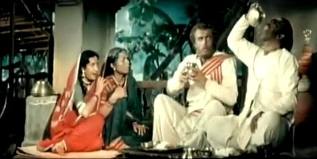
You can update or correct this page, send photographs and/ or |
[edit] Part 1: CinemaScope films in Bangladesh, India, Nepal, Pakistan, Sri Lanka
By P. Dewan
[edit] CinemaScope films in India
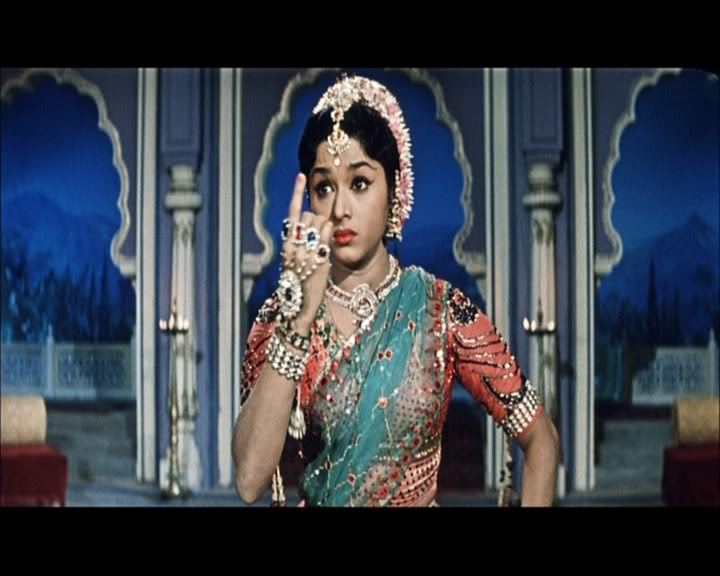
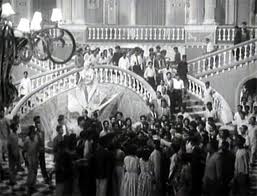


[edit] Roots in the USA and the USSR
‘The Robe’ (USA, 1953/ 20th Century-Fox/ Colour) was the world’s first motion picture to be filmed in wide-screen 35mm, CinemaScope. The original trailer had Darryl F. Zanuck, Vice President, Production, 20th Century-Fox, explaining what CinemaScope was and how it worked.
In 1956, Aleksandr Ptushko (born in Lugansk, Ukraine) released Il'ia Muromets, the first Soviet film shot in stereo and for the wide-screen (SovScope).
Indian cinema got off to a very early start with this new technology, thanks to a collaboration with the USSR's Mosfilm Studios.
[edit] The 1950s
[edit] Pardesi
The bilingual Indo-Soviet film Pardesi (1957) (Hindi-Urdu/ Russian/ dirs: Khwaja Ahmad Abbas, Vasili M. Pronim) was released in 1957. The film is called ‘Khozhdenie za tri morya’ (Хождение за три моря) in Russian and its subtitled English version is known as ‘Journey Beyond Three Seas.’ India’s first wide-screen film was in SovColor. (CinemaScope is a brand name. SovScope has the same aspect ratio and uses similar technology.)
Can Pardesi (1957) be considered an Indian film? True, it was a co-production but it was released in India first. Its Indian Censor Certificate states ‘Colour, Scope’ and gives the name of its filmmakers as ‘Meera Movies’ and ‘Son[?]a Sansar International.’
Even in the Russian version Naya Sansar's name appears before Mosfilm's.
[edit] Guru Dutt
In 1957 actor-director Guru Dutt purchased from 20th Century Fox the technology needed to make a CinemaScope film—Gouri, a Bengali film with him in the lead opposite his real-life wife, the singer-actress Geeta Dutt. According to a cinema historian, “By 1957, [their] marriage had run into rough weather and was on the rocks. Guru Dutt had fallen for his new leading lady Waheeda Rehman. The breaking up of [their] marriage also began having repercussions on [Geeta Dutt’s] career. To quieten things down Guru Dutt launched a film Gauri (1957).”[1]
Some of the film was shot in and around Calcutta and two songs were recorded. However, Guru Dutt decided to stop making Gouri, presumably because of the domestic situation. He launched Kaagaz ke Phool instead, with Waheeda Rehman.
‘Kaagaz Ke Phool’ (Hindi-Urdu, 1959) was India’s second CinemaScope film and was filmed in black and white (B&W), in technical collaboration with 20th Century Fox. It had an aspect ratio of 2.35: 1. This film was widely released, got excellent reviews from the minuscule literati--and scathing ones from vastly more influential bimbos like Babubhai Patel. Its soundtrack album was a success (and, like the film itself, a cult favourite to this day). However, ‘Kaagaz Ke Phool’ flopped at the box office, because the subject was considered too heady (and, to quote Dutt's friend Dev Anand, depressing) for the 1950s.
CinemaScope,thus, had a very shaky start in India.
[edit] Cine historian Sudhir on how the technology was distributed within India
CinemaScope was and still is an inexpensive technology
To Shoot the Film: One needs an 'Attachment' for the camera, which compresses the view from 2.35 : 1 aspect to 1.35 : 1 for 35 mm frame. 2oth Century Fox loaned out this attachment for a small rental fee
The Cinema Hall operators needed two items: i) An 'Attachment for the Projector', which expanded the compressed image back to an ‘aspect ratio’ of 2.35 : 1. The film producer bought this item from 20th Century and with each print released included this Lens Attachment. The distributor in turn, sent this Attachment to the Cinema Hall.
2 - The Cinema Hall owner had to modify the screen, which was done by increasing the width of the screen and then adding Flaps on each side. For projecting a CinemaScope film, these flaps were opened with a hook-type fixture affixed to the wall.
20th Century was quite liberal in terms of licensing. The studios (i.e. film producer/s could add any name to this technology, as long as it ended in Scope. SovScope, FilmalyaScope, MetroScope are all same items
The Aspect Ratio need not have to be 2.35 : 1. Many films have been made with an 1.85: 1 aspect ratio
For many years from the start of this technology, only a few prints would be made in the Wide Screen format. A large number of these CinemaScope films were released in the ‘un-compressed’ Format (i.e.: the regular 4:3 Aspect). This type of dual standard was used for SHOLAY (1975).
[edit] Mr Sudhir on Pardesi
Mr Sudhir seems to recall that Pardesi (1957) was released in India in the Non-CinemaScope format-though in colour. Indpaedia, however, has in its possession a DVD with a B&W/ CinemaScope print in Hindi-Urdu. YouTube has the film's Hindi-Urdu songs in Colour and CinemaScope. Therefore, the film was released in India in multiple formats.
Mr Sudhir adds: The Russian version is available on YouTube. It is in Color + CinemaScope (2.35 : 1 aspect). However, the [amateur] at MOSFilm, who was given the job of converting the 'Source Files' to Mp4 format for YouTube stretched the video by 33% (the video file size is640 x 208= 3.07 : 1 pixel)
The URL for the 2 parts are:
It has more or less all the songs. However, except for 'Na Ja Na Ja Balam / Lata' all other were mutilated by the director.
For this song, one can view the perfect file (2.35 ratio + Color) at URL Pardesi: the correct print
[edit] Mr Sudhir on the first 5 Indian CinemaScope films
Mr Sudhir adds: Unfortunetly, all 5 initial films made in CinemaScope failed. His views on these 5 films are:
Except for KAAGAZ KE PHOOL, for the rest sincere efforts were made to present idiotic films.
PARDESI - Except for 1 film (ANHONEE featuring: Main Dil Hoon Ik Arman Bhara), all of K A Abbas films have been flops
PYAR KI PYAS - Mahesh Bhat generally made un-interesting and dated films
SON OF INDIA – Mr Sudhir calls it a ‘Gujrati Thaali. Idiotic story and twists’
LEADER- Mr Sudhir writes, ‘Produced by S Mukherji with funds from moneyed people, who wanted some vehicle for tax deduction Hence, instead of getting it directed by any of dozen of directors, SK could ask for, the job was was given to RAM Mukherji, who was a green-horn Like SON OF INDIA, it too has [Quixotic] characters.
[edit] The 1960s
Initially, CinemaScope was an expensive technology--not so much for the film's makers (who only needed to hire a fancier camera) as for the cinema halls, each of which had to get new projection lenses and, more important, invest in new widescreens. Only such Indian cinema halls as screened English-language films (and, therefore, catered to the Indian elite) had CinemaScope projectors, lenses and widescreens. Therefore, it is a curious fact that India’s third 'CinemaScope' (i.e. widescreen) film, ‘Pyar ki Pyas’ (Hindi-Urdu, 1961),which was in Gevacolour, was a low-budget family weepie. This film, too, tanked without the new screen technology getting noticed by the Indian public. (The film's credit titles specify that the film is in 'CinemaScope.')
That was when the Moguls of Indian cinema stepped in. Mehboob Khan was a communist (his company’s logo was the hammer-and-sickle) who used to make the biggest budget films of the era. His ‘Aan’ (Hindi-Urdu, 1953), was the first Indian film to be printed in the extremely expensive Technicolor.(Aan was shot in 16 mm and later blown up to 35 mm.) Khan followed it up with the 172-minute, 'Color by Technicolor,' multi-star blockbuster ‘Mother India’ (Hindi-Urdu,1957). Therefore, it was only logical that his next film, ‘Son of India’ (Hindi-Urdu,1962) would marry the two pricey technologies to become India’s fourth widescreen film and the first in 'Print by Technicolor.'
However, ‘Son of India’ was another arthouse film and, uncharacteristically for a Mehboob Khan opus, featured only unknown actors. Once again widescreen failed to draw audiences. The Indian film industry gave widescreen one last chance. ‘Leader’ (1964) featured the biggest star of the era, was shot in Eastmancolor and was a mega-budget entertainer. However, the jinx surrounding widescreen (renamed Filmalayascope for this film) continued. (Son of India's credits only inform us that the film is in 'Scope' and Leader's that it is in Filmalayascope. This suggests that both films might have used one of CinemaScope's unbranded substitutes. CinemaScope is a brand name owned by 20th Century Fox.)
If ‘Son of India’ was Mehboob Khan’s first disaster (and the last film that he ever made), ‘Leader’ was the first of a series of flops for the thitherto hyper-successful Dilip Kumar. (Incidentally, the failure of ‘Kaagaz Ke Phool’ had shattered its director Guru Dutt.)
Indian cinema gave up on CinemaScope—for the rest of the decade.
[edit] The 1970s: Hindi-Urdu cinema
Then, in 1972, came Kamal Amrohi's ‘Pakeezah’(Hindi-Urdu), which was the second biggest grosser of the year and the first Indian CinemaScope film to make money. However, its mega success was attributed to other factors and CinemaScope continued to have no takers in Hindi-Urdu cinema.
(Amrohi had always been something of an innovator. He made the offbeat Daera (1953)in which the lead pair do not so much as meet till the film's last sequence. Such lack of romance was unthinkable in Indian cinema till the 21st century. Thus, only Amrohi could have had the nerve to revive CinemaScope when the Moguls of the Indian film industry had banished it.)
[edit] Other Indian cinemas
India’s Tamil and Telugu film industries are, on some counts, as big as the commercially better-known Hindi-Urdu cinema. Like their counterparts in Bombay (now Mumbai) they make big-budget entertainers. Filmmakers in Tamil Nadu and Andhra Pradesh were more impressed by the success of ‘Pakeezah’ and it was in South India that CinemaScope ultimately struck roots.
[edit] Tamil
The historical epic, Raja Raja Cholan (1973) was the first CinemaScope film in Tamil, in South India and, indeed, in any Indian language other than Hindi-Urdu. Producer: G. Umapathy/ Anand Theatres , Chennai; Director: A. P. Nagarajan; Music: Kunnakudi Vaidyanathan; Cinematography: W.R. Subba Rao.
The film had a huge, super-A list star cast: Sivaji Ganesan, R. Muthuraman, Sivakumar, M.N.Nambiar, Lakshmi, Manorama,Vijayakumari,S. Varalakshmi. It also featured the singing stars T. R. Mahalingam and Sirkazhi Govindarajan.
And yet, the jinx surrounding CinemaScope in India throttled Raja Raja Cholan as well. The film tanked.
As had happened in Hindi-Urdu cinema, this failure deterred Tamil filmmakers from making another CinemaScope film for many years.
Cinematographer Ramachandra Babu feels that his Allauddinum Albhutha Vilakkum (Tamil and Malayalam/ 1979/ Dir: I.V.Sasi) was the next Tamil film in CinemaScope. This was a magic- and fantasy-filled period costume drama.
[edit] Other Indian cinemas
However, the success of Sholay (70mm) had created a huge market for the widescreen format in other Indian cinemas.
The freedom struggle blockbuster ‘Alluri Seetharama Raju’ (1974) the first CinemaScope film in Telugu , 'Sonbai ni Chundadi' (1976, dir Girish Manukant) the first in Gujarati, ‘Sose Thanda Soubhagya’ (1977) the first in Kannada , ‘Thacholi Ambu’ (1978) the first in Malayalam, ‘Hisab Nikas’ (1982, d Prashanta Nanda)the first in Odiya and 'Jeevan Surabhi' (1984/ dir: Naresh Kumar) the first in Assamese. Vairi-Jatt (1985) is arguably India’s first Punjabi language film in CinemaScope; Jaspal Bhatti’s Mahaul Theek Hai (1999) claims to be the first CinemaScope comedy in Punjabi (India). The first CinemaScope film to be made in Marathi was Dhadakebaaz (1990) by Mahesh Kothare. Hal Ta Bhaji Haloon was perhaps India’s first colour and CinemaScope Sindhi film.
By the late 1970s the majority of big-budget Tamil and Telugu films, and many in Kannada, were being made in CinemaScope.
Hindi-Urdu cinema, which had started the trend, was slow to catch on this time around.This started changing with the success of ‘Dulhan Wahi Jo Piya Man Bhaaye’ (Hindi-Urdu, 1977) a low budget CinemaScope film that was the 8th biggest hit of the year.
By the mid 1980s all big-budget films in India, and by the early 1990s all Indian films (and most South Asian films) irrespective of language, genre or budget, were being made in CinemaScope.
[edit] CinemaScope films in Bangladesh and Pakistan
East Pakistan is credited with the two major film-technology firsts of Pakistan (and, therefore, Bangladesh). Not only was East Pakistan (the present Bangladesh) more populous than the then undivided nation’s western wing, almost everyone in the East spoke Bengali, giving it a market several times as big as West Pakistan's.
West Pakistan (the present Pakistan), on the other hand, was divided into four major languages, with a fifth, Urdu, enjoying importance disproportionate to the number of its speakers. Urdu was the official language, the language that linked the five linguistic groups of undivided Pakistan and the language (wrongly) considered more sophisticated and suitable-for-literature than the other languages of at least West Pakistan.
Zahir Raihan (1935-c.1972) was an unlikely pioneer of Pakistan’s Urdu cinema. Not only was he a Bengali, he graduated with BA (Honours) in Bangla (Bengali) from the University of Dacca (now Dhaka). On the 21st February 1952 he was one of ten students who defied the ban on the now-historic Language Movement—which had since 1948 been demanding that Bangla be made one of the state languages of Pakistan. Many youths were killed on that fateful day. Zahir was sent to jail.
And yet when Zahir made Pakistan’s first colour film Sangam(April 23, 1964), and also its first CinemaScope film Bahana (1965/ black & white), both were in Urdu. (The Indian magnum opus Sangam, in the making since 1962, was released a few weeks after its Pakistani namesake.)
Mala (Bengali/ 1965), also produced in erstwhile East Pakistan (by Dosani and Mustafiz), was the first film made in CinemaScope and colour in undivided Pakistan (and, thus, Bangladesh). Released on Dec 3, it was directed by Mustafiz and produced by him and Dossani Its music was by Ataur Rahman and starred Sultana, Azeem, Irfan and Khalil.
Lakkha (September 22, 1978) was the first CinemaScope film in Pakistan’s most widely spoken language, Punjabi. By then almost all Pakistani films were being shot in colour.
Syed Kamran Haider’s Zero Point (2012) was the first Sairaiki film in CinemaScope and Dolby Stereo.
Yousaf Khan Sher Bano (1970/ 71; writer: Ali Hyder Joshi; director: Aziz Shamim)) was the first Pashto film. Today most Pashto films are released in CinemaScope.
[edit] CinemaScope films in Nepal
Which was Nepal's first CinemaScope film?
Wiki.answers gives this honour to Paral ko Aago (1978), a black and white film directed by Pratap Subba. However, all three songs from the film available on YouTube are in the normal 3:4 format of 35mm, and not in CinemaScope.
Shop.muncha on the other hand says that Bishnu Gopal Shrestha's Ranko (colour) was the First Nepali CinemaScope Movie. We checked out the lone song from this film available on YouTube. It, too, is in the normal 3:4 format of 35mm, and not in CinemaScope.
One single image, which seems to be from the credit tiles of Paral ko Aago, suggests that the film might indeed have been Nepal’s first in CinemaScope.
If readers have more authentic information could they please send it to our Facebook page Indpaedia.com
[edit] CinemaScope films in Sri Lanka
Dr. Diego Badaturuge Nihalsinghe brought CinemaScope to Sri Lanka through Ketikathava, a short film. In 1971 he made Welikathara , the country’s first 35mm CinemaScope feature film
[edit] See also
CinemaScope films in Bangladesh, India, Nepal, Pakistan, Sri Lanka
70mm films in India/ South Asia
